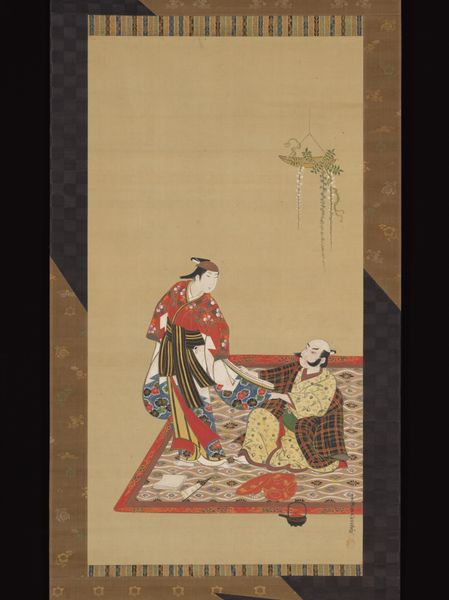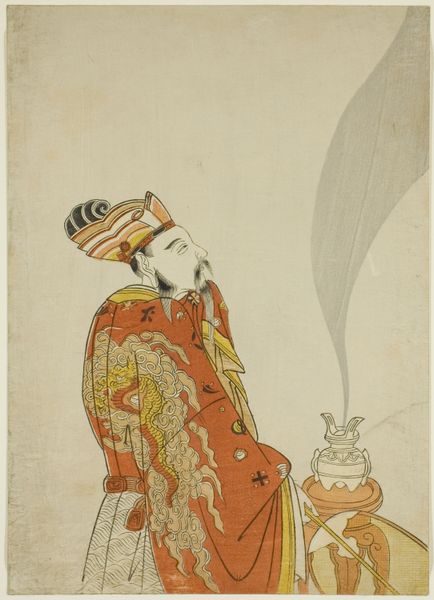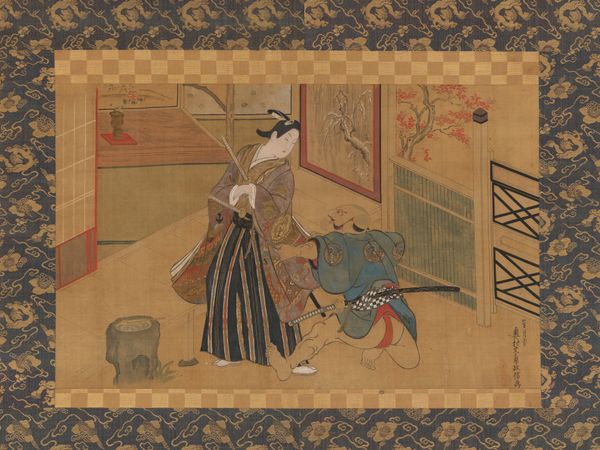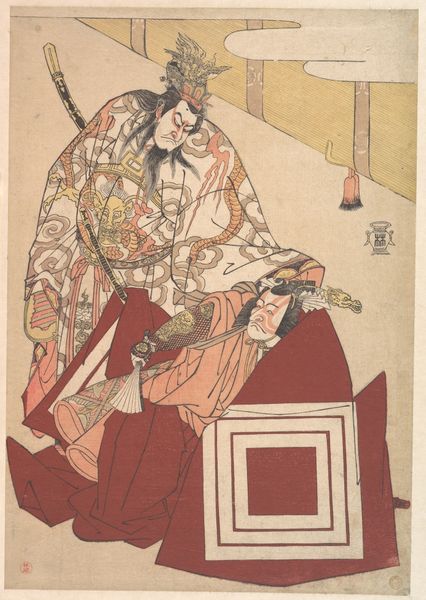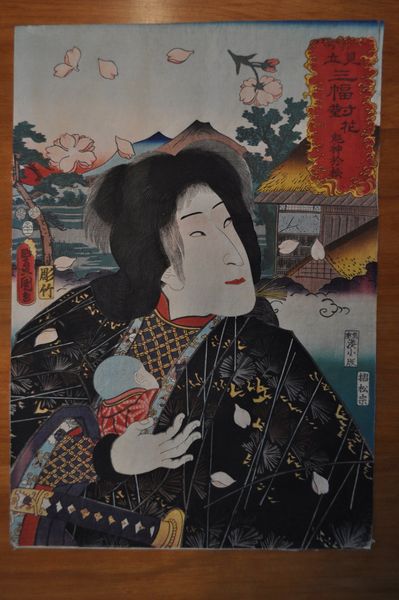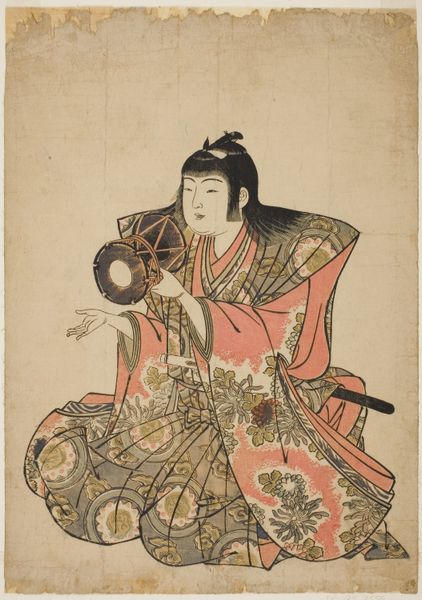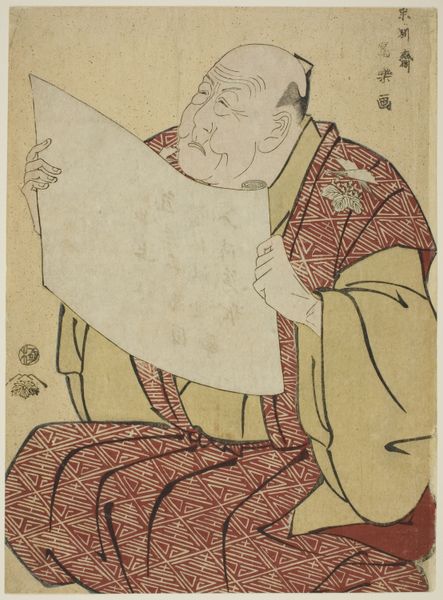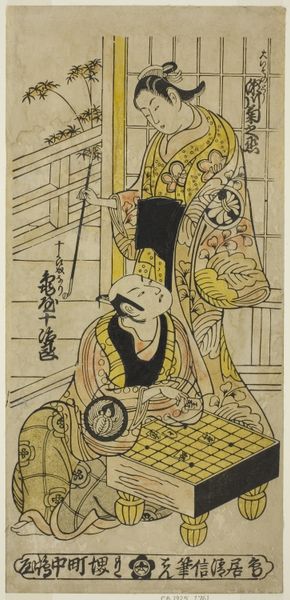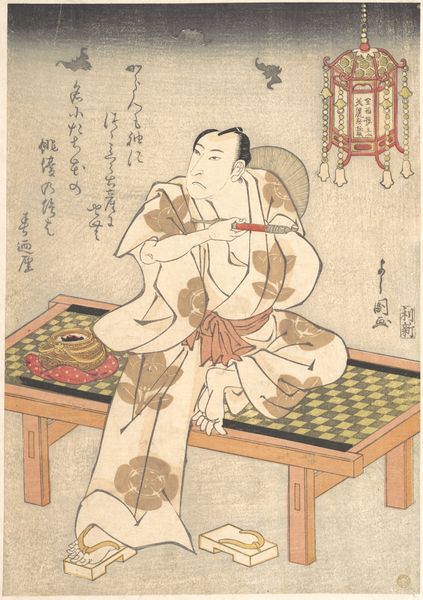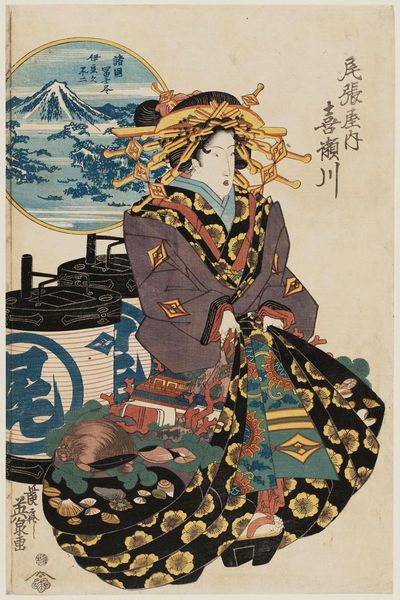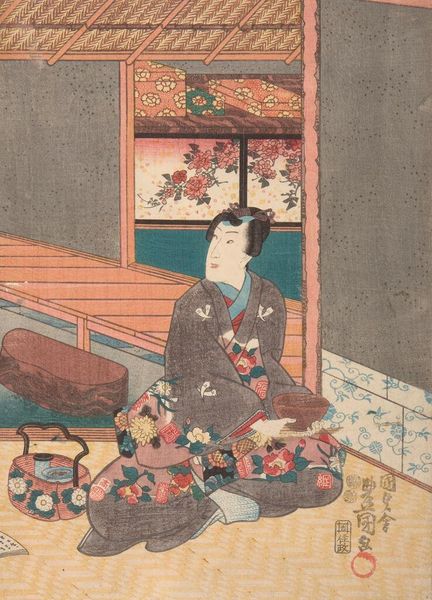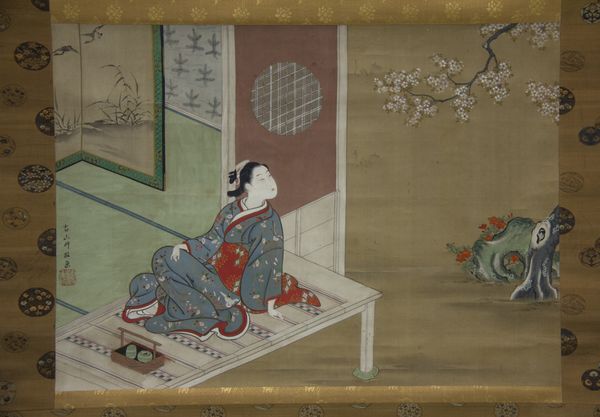
watercolor
#
portrait
#
water colours
#
asian-art
#
landscape
#
watercolor
#
intimism
#
coloured pencil
Dimensions: 46 3/16 × 20 7/16 in. (117.32 × 51.91 cm) (image)78 1/4 × 25 1/2 in. (198.76 × 64.77 cm) (without roller)
Copyright: Public Domain
Editor: This is Kano Kazunobu’s “Seated Arhat with Rosary,” from around 1850, created using watercolors. There’s such a sense of serenity in the image, but something about his expression feels… complicated. What can you tell me about it? Curator: The application of watercolor, its source, preparation, and the very act of applying it to the surface – these are not neutral acts. What looks serene involves specific choices rooted in material conditions. Consider the pigment: Where did it originate? How was it processed? Was it imported or locally sourced, and what does that signify about trade routes and access to resources in 19th-century Japan? Editor: I never thought about the watercolours themselves. It seems like a basic medium, but there's so much more. Curator: Exactly! Look at the varying opacities and textures. Are some areas more diluted than others? How does this manipulation of the material contribute to the depiction of space and form? Even the paper matters. What kind of paper is it, and how does that influence the absorption and drying of the pigment? These elements affect how the work ages, how it's conserved. The labour and techniques required also define our understanding, not only of the artwork but of the entire system surrounding it. Editor: It’s amazing to think how much meaning and history is embedded within the physical stuff of the artwork. Curator: Materiality gives rise to a greater awareness of social structures as it transcends mere observation. We can begin to comprehend production and artistic intention with even greater perspicacity. Editor: I definitely have a richer appreciation now, seeing the work through a material lens. Thanks!
Comments
No comments
Be the first to comment and join the conversation on the ultimate creative platform.
